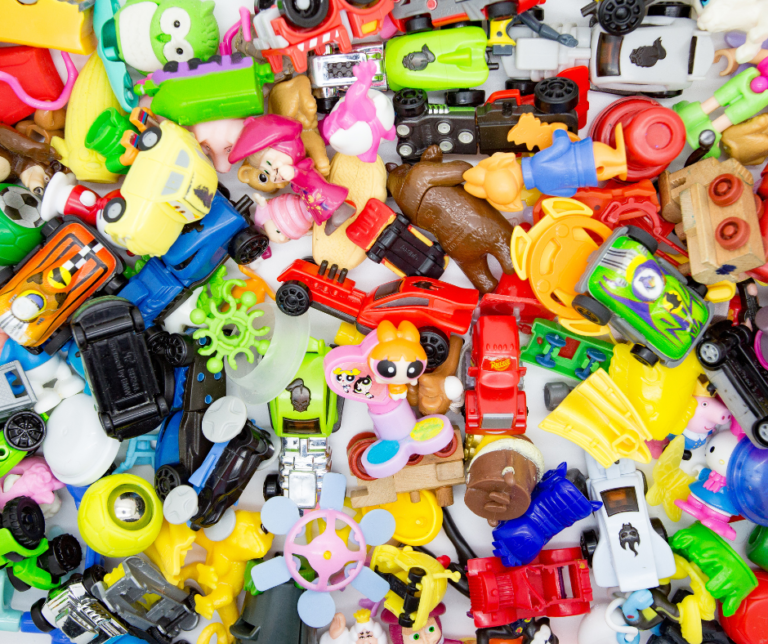By Brooke Stoyak, M.A., CCC-SLP

Mini Objects You Ask?
Mini objects are such a HIT in therapy, as of recently. There are endless possibilities of therapy ideas/targets when incorporating them at home or in a therapy session. Most children LOVE to play with mini objects and they tend to hold children’s attention for long periods of time. You can purchase mini objects at the dollar store, Amazon and even collect items from inside your home! (e.g. paper clips, rubber bands, caps off of pens, etc.)
Well, What Can I Target?
Following Directions:
Gather your mini objects and place them in a pile on a table or in a bucket. Ask your child to grab a mini object and place it somewhere in the room. For example, you could say, “Grab the green frog and place it on the chair.” To increase the complexity of following directions, you could use a before/after phrase. “Before you grab the red bird, point to the refrigerator.”
Prepositions:
Your mini objects are perfect for targeting prepositional locations/phrases. Simply take your objects and work on placing them: on, under, between, behind, in front of, next to, over and under. You can pair your mini objects with other toys, such as a zoo! (e.g., “Place your mini carrot under the zebra.”, “Where is the carrot?”, “UNDER the zebra!”).
Categories:
Once you collect different types of mini objects that are related by group, you can target categorical concepts. Have your child sort them into categories. Some categories include: furniture, colors, transportation, animals, food, clothing, things that are *color*, things that are hot, things that are soft, etc. The ideas go on forever!
Articulation:
Play “I Spy” to target /s/ blends. Lay out a large group of mini objects onto a clear area at home and take turns finding different items. This idea is perfect for articulation practice! Change up the “I spy” phrase to match your child’s articulation concerns. (e.g., “Tap the…”, “Catch the…”, “Push the…”, etc.)
Compare/Contrast:
Choose a few mini objects to discuss with your child. Talk about similarities and differences between the items. Things you can discuss include: shape, size, color, function (e.g., What does it do?) and location (e.g., Where can you find it?”). You can take these opportunities to expand your child’s utterance length and vocabulary. (e.g., “The dinosaur is different than a giraffe because…”).